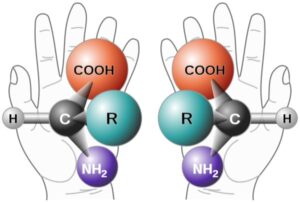
Figure 1: This is an image of Venus with its surface obscured by a thick atmosphere composed of carbon dioxide, sulfuric acid, and with trace amounts of other gases, including phosphine. Phosphine has been a particular source of interest for researchers as it is normally produced by biotic organisms, and it could be the first signs of life on the planet.
Source: Wikimedia Commons
Current search for life in the solar system has been focused on Mars and the icy moons of Europa – Titan and Enceladus – among other celestial bodies. Research has heavily focused on these three bodies specifically due to a hypothesized presence of water or methaneand subsequently explored the possibility of a signature of microorganisms.1 Venus has also been investigated as a potential area for life in the solar system, although until recently the possibility of life on the planet was considered to be low. Compared to Earth, Venus experiences a more severe greenhouse effect due to itsthick carbon dioxide atmosphere that traps infrared radiation and leads to surface temperatures in excess of 471˚C and an atmospheric pressure over 90 times that of Earth.2 Due to the combination of excessive heat and pressure along with a lack of oxygen and liquid water, Venus was previously considered to be unsuitable for life.
However, recent research suggests there is new biosignature in the atmosphere of Venus – phosphine gas (PH3).3 Phosphine is typically found in abundance within the atmospheres of giant planets such as Jupiter and Saturn, since its formation is chemically favorable at high pressures and temperatures.4 Phosphine is also present in trace amounts on Earth, but is formed due to anaerobic processes from microbial life.4 While the exact mechanism for the biological production of phosphine on Earth is unknown, there are currently no other known abiotic sources of phosphines for terrestrial planets.3
In the study, researchers from the University of Cambridge and the Massachussetts Institute of Technology used the James Clerk Maxwell Telescope (JMCT) and Atacama Large Millimetre Array (ALMA) to map Venus’s atmosphere in search of phosphine, searching for 4 the 1.123 mm wavelength infrared absorption line characteristic of phosphine.4 The group then compared the strength of this absorption line to the complete infrared absorption contiunum of the planet to determine the concentration of phosphine in the atmosphere. Adjusting for the planet’s apparent velocity, researchers used their findings to estimate that phosphine was present at approximately 20 parts per billion, a indicative of a significant and noteworthy presence..4 The researchers also discovered that phosphine was mainly in the mid-latitudes of the planet, with no phosphine detected in the polar regions. Although phosphine has an absorption spectrum near that of the more prevalent carbon dioxide (CO2) and sulfur dioxide (SO2), the group determined that neither gas could have contributed more than 10% to the intensity of the target phosphine spectral line, contributing to the significance of the phosphine finding.4 To further investigate the possibility of phosphine contributing to life on Venus, the group also looked into alternative pathways of phosphine genesis, but determined that production of phosphine from metal phosphides or phosphoric acid (H3PO3) would be impossible due to the lack of hydrogen gas and insufficient free energy for the reactions. The group also ruled out outgassing, lightning, and volcanic activity as possible explanations due to a lack of hydrogen and oxygen radicals needed to reduce the phosphates present on the planet to phosphine.4 Given the initial finding and investigation of possible confounding variables, the possibility of life on Venus becomes more and more believable.
While the presence of phosphine on Venus is a potential argument for the presence of life, researchers in the group were unable to rule out possible unknown and “exotic” photochemistry and geochemistry on the planet that could generate phosphine through abiotic means.3 The group noted that Venus’s hyperacidic atmosphere and extreme dehydrating conditions present significant problems for the possibility of earth-like life in Venus’s atmosphere.4 To chase down the newly discovered lead, scientists have now turned to the Breakthrough Initiatives project, a group led by MIT scientist Sara Seager to investigate the case for life on Venus and the challenges of a possible exploratory mission to gather more data. Ultimately, with extensive modeling and future sampling the source of Venus’s phosphine may be determined and the question of whether there is life on the planet will be answered.
References
- Choi, C. Q. (2020, January 16). Venus: The hot, hellish & volcanic planet. Retrieved September 29, 2020, from https://www.space.com/44-venus-second-planet-from-the-sun-brightest-planet-in-solar-system.html
- Dorrian, G. (2020, September 24). The Four Most Promising Worlds for Alien Life in the Solar System. Retrieved September 29, 2020, from https://singularityhub.com/2020/09/24/the-four-most-promising-worlds-for-alien-life-in-the-solar-system/
- Greaves, J.S., Richards, A.M.S., Bains, W. et al.Phosphine gas in the cloud decks of Venus. (2020). Nat Astron. https://doi.org/10.1038/s41550-020-1174-4
- Wall, M. (2020, September 16). Life on Venus? Breakthrough Initiatives Funds Study of Possible Biosignature. Retrieved September 29, 2020, from https://www.scientificamerican.com/article/life-on-venus-breakthrough-initiatives-funds-study-of-possible-biosignature/
Related Posts
Superconductivity: Past, Present and Future
Figure 1: Dutch physicist Heike Kamerlingh Onnes. Onnes lay the...
Read MoreSuper Selective Synthesis: The Evolution of Enantioselective Methods
Figure 1: Two enantiomers of an amino acid. These molecules...
Read MoreDetecting Gravitational Waves with Precision: Evolution of Gravitational Wave Detectors
Figure 1: Simulated model of spacetime ripples as a result...
Read MoreAndrew Sasser



